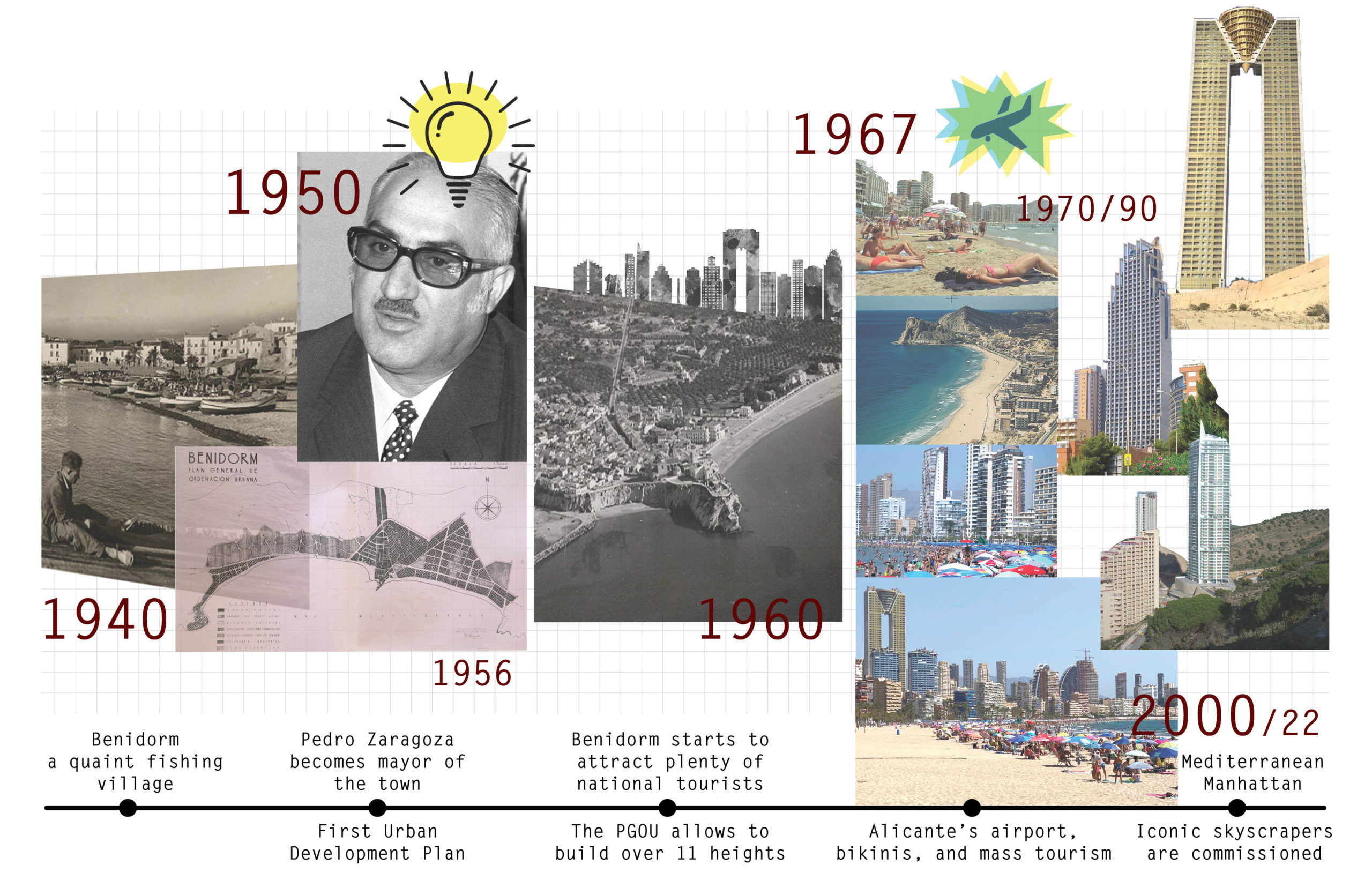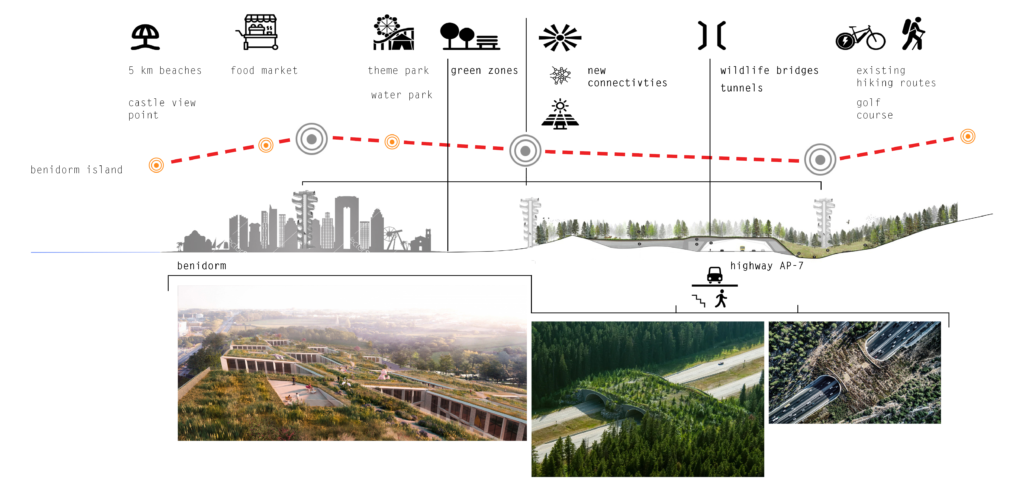A new ecosystem for a global tourism destination
Benidorm, Alicante
The city of Benidorm is the most renowned mass tourism destination on the Spanish Mediterranean coast. It has been recently acknowledged as a sustainable urban development to support the mass-tourism industry; however, Benidorm had received strong criticism during many years, mainly because of its striking urban image. The aim of this proposal is to showcase the relevant role of performative urban design for the development of an effective coastal tourism product.

In 1950, the then mayor Pedro Zaragoza had a dream: to transform a fishing village into an international tourism destination that would save the city from an economic collapse. He convinced the national authorities to develop an urban model capable of attracting and hosting tens of thousands of tourists at a time when the local population was just under 3,000.

Since then, Benidorm has scaled up its business model based mainly on an extreme vertical urban growth that concentrates high supply of leisure activities along the coastline. The beach and the sun as best allies. As some other mediterranean cities, the city has grown following a monodirectional scheme, taking the seafront as the main focus of attraction in terms of views and uses, and leaving behind any other component regardless of its potential importance.

So, we question ourselves: how would Benidorm be if it had two seafronts? And moreover, what if it had two differentiated valuable edges to look at?
The proposal introduces an in-between third front that seeks to connect and hence activate the hidden potentials of the entire territory and its natural resources, from the mediterranean coast to Sierra Aitana and surroundings. The multilayer strategy consists of various steps. The first one, to utilize the existing Ramblas that connect the maritime promenade with several parks and existing points of attraction. The second, to introduce green tunnels and bridges over the AP-7 highway that serve as ecological corridors for humans and fauna.

Creating a catalogue of Performative Structures
And the last, to occupy the inland via an optimized network of new and unexplored spots. A series of outdoor spaces and performative high-rise infrastructures, analogy of the verticality that characterizes the city, are proposed to offer a diverse leisure and accommodation.

It is time now, seven decades after, to dream again and set Benidorm as an international, distinct and sustainable tourism destination.


